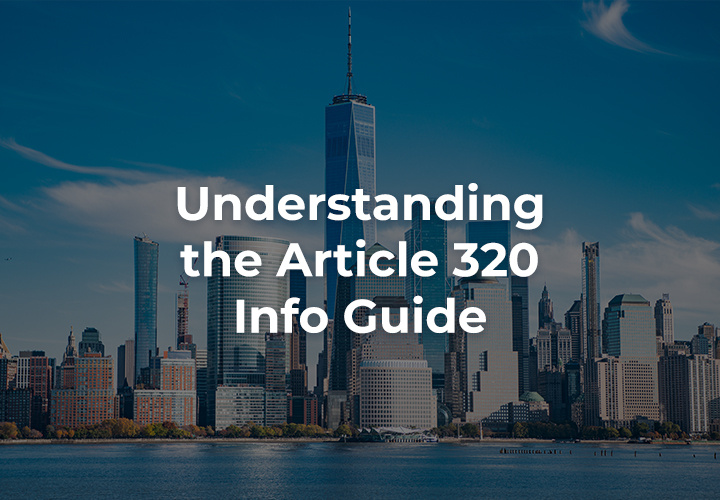- It exceeds 25,000 gross square feet
- There are two or more buildings on the same tax lot that collectively exceed 50,000 square feet, or
- There are two or more buildings owned by a condo association that are governed by the same board of managers and collectively exceed 50,000 square feet.
Do you know if your building is included? Here is a list of Local Law 97 Covered Buildings across the five boroughs.
How the “Article 320 Info Guide” can help you
The “Article 320 Info Guide” was designed to offer advice on how to work with energy consultants, engineers, and other professionals in developing a compliance plan that meets the city’s ambitious carbon reduction goals, specifically for condos and co-ops. Boards and management companies are responsible for understanding their buildings’ energy profiles and ensuring compliance with LL97.
There are six sections to the guide which can help you navigate your pathway to compliance. They include: (I) background; (II) Article 320 compliance pathways; (III) reporting and extension requests; (IV) emissions calculations; (V) deductions; and (VI) mediated resolutions.
Many condo and co-op buildings are residential and owner-occupied, which presents unique challenges in managing and financing building-wide energy improvements. Here are key takeaways in the guide to help you through the process:
- Building owners may challenge the status of whether their condo or co-op is subject to LL97. Exemptions or adjustments to emission limits may also be possible, as well as provisions for special cases (e.g., buildings that are difficult to retrofit, financial hardship).
- Deadline extension requests begin April 1, 2025—one month prior to the May 1, 2025 deadline. Filers will have a 30-day grace period—until June 30—to avoid any penalties for failure to file a building emissions report. Penalties will be calculated at $0.50/square foot for each month, which depends on the size of the building, and equates to a minimum of $12,500 per month—based on the condition of all covered buildings are over 25,000 square feet.
- The emission goal for LL97 has been revised to “net zero” by 2050—originally set at an 80 percent reduction. This means that Article 320 buildings must reach this mark by eliminating 100 percent of carbon emissions within the next 26 years. For now, buildings must meet specific carbon emission limits, with the first compliance period lasting from 2024 to 2029—with stricter limits beginning in 2030.
- Most building owners already must report their energy usage on an annual basis to the NYC DOB using Energy Star Portfolio Manager as a part of the Energy Benchmarking law (Local Law 84). A separate building emissions report must be filed and certified by a registered design professional to determine whether the building complies with the emission limits. The guide provides helpful and specific information to prepare and file these emission reports.
- Financing the necessary energy efficient and carbon reduction upgrades to meet LL97 requirements can be a complex process. The guide highlights possible funding options to help co-op and condo owners comply with the law. This includes energy efficiency grants, loans, and other financial incentives aimed at offsetting the costs of required upgrades.
Insights from the experts
At Milrose Consultants, we’re working with HLZAE to provide you with the crucial information you need to navigate these changes and avoid penalties. We’ve created a comprehensive Local Law 97 Education Resource that provides valuable insights, key deadlines, and strategies to help you meet the law's requirements effectively. Visit our Local Law 97 Educational Resource today and start your journey toward compliance:
Let us be your municipal compliance partner
HLZAE's Registered Design Professionals, Certified Energy Professionals, and experience with Energy Audits combined with Milrose's Full-Service Engineering Design and Consulting services can ensure your goals of meeting requirements for Local Law 97, sustainable operation, and reduced operating costs are met. We can help you prepare a carbon reduction strategy that best fits your budget and submit the necessary reports to the DOB.
Connect with us today to learn more about our Local Law 97 services.






-3.png)


